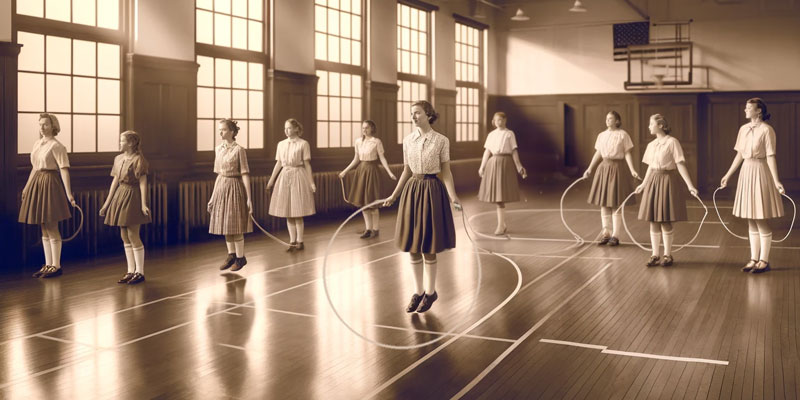
Title IX Becoming a Victim of Its Own Success
I grew up in a world in which girls didn’t have any right to participate in sports programs — whether school, town, city, or other programs. It was the accepted practice I found wherever I moved as a child; my dad was an air traffic controller, and promotions often meant going to a new state.
As a young girl, I was very interested in playing organized sports because I enjoyed playing with my friends in backyards, streets, playgrounds, and grammar school recesses. No problem, I thought… until I tried to join a baseball team in Reading, Pennsylvania, at the age of 10. There were no girls’ teams, so I tried to join the local boys league. My reaction to the discrimination of being refused was to cry with disappointment. I didn’t understand the reasoning, so I asked my mom and dad for help. They contacted the coach and argued my case, but they were helpless, too. I resented that, just because I was a girl, I couldn’t join and play.
My father kept watching for the chance to move closer to family, so he applied for assignment to the New Bedford Municipal Airport, and he got the job. When I was 12, we moved to Fall River, Massachusetts, where my mom and dad had grown up.
I started Morton Junior High in seventh grade and was excited about the new adventure of gym class on my schedule. During the ’60s, girls had to wear these awful A-line blue gym suits with pantaloons. I walked past the beautiful gym on my way to the locker room and was confused, when after we’d changed into our gym outfits, the instructor told us to make two lines, space ourselves, and face her.
Space ourselves for what?, I wondered. Unbelievably, my gym class was held in the locker room, not the gym. The gym was for the boys. The girls exercised in the locker room. Once again, I went home upset. Once again, I reported the situation to my mom, who was at a loss for words. Alas, once again, I found there was nothing that could be done.
I found the same reality when we moved to Tiverton and I went to Pocasset School. At the time, the town did not have a high school, so we had school choice. My family chose Mount St. Mary’s High School, which had a basketball team. Although I didn’t make the team, I was encouraged by the possibility.
In 1966, I joined what would be the first graduating class from Tiverton’s new junior-senior high school. Unfortunately, a new building did not mean new thinking, and there were no competitive sports programs for girls.
We did have gym class in the actual gym, although the partition remained shut, and the equipment was on the boys’ side most of the time. Equipment wasn’t the only thing missing from the girls’ experience. The girls’ version of basketball was so boring. You could dribble the ball three times and then had to pass it. No running. I asked the teacher why the boys had a very fast, fun, competitive game and we did not. I don’t remember any answer beyond having to play by the rules, which meant no fun.
It was supposed to be a time of liberation, so some of the girls interested in competitive sports started a petition, and everyone interested signed it. We presented it to the principal, who said he would get back to us. A couple of days later, we were told the school department did not allocate any money or budget for competitive girls’ sports programs… other than for cheer leaders. The school had no budget to pay a coach, buy uniforms, or pay for busses.
Title IX changed all this in 1972. The schools had to fund and offer competitive sports for girls.
When I had daughters, I was grateful they would have a chance to shine in competitive sports in towns, cities, and schools and possibly even earn scholarships for college. They didn’t have to be frustrated always sitting on the sidelines, not being able to participate because discrimination was simply accepted.
Unfortunately, it’s starting to look like the success of girls’ and women’s sports, allowing us to compete against each other on an equal footing, is now in jeopardy. Now that girls are no longer stuck in locker rooms or on the empty side of a partition, biological males are asking to compete against them. In state after state and sport after sport, girls reaching for the golden ring are having it snatched from their grasp.
Obviously, the story we’re told is very different. We’re not told that discrimination against girls is acceptable, but somehow giving girls their own sports is discrimination! The effect is the same. When I was a girl, I couldn’t take a spot on the boys’ team. Now, biological boys get to play on their own teams and the girls’.
Featured image by Justin Katz using Dall-E 3 and Photoshop.
